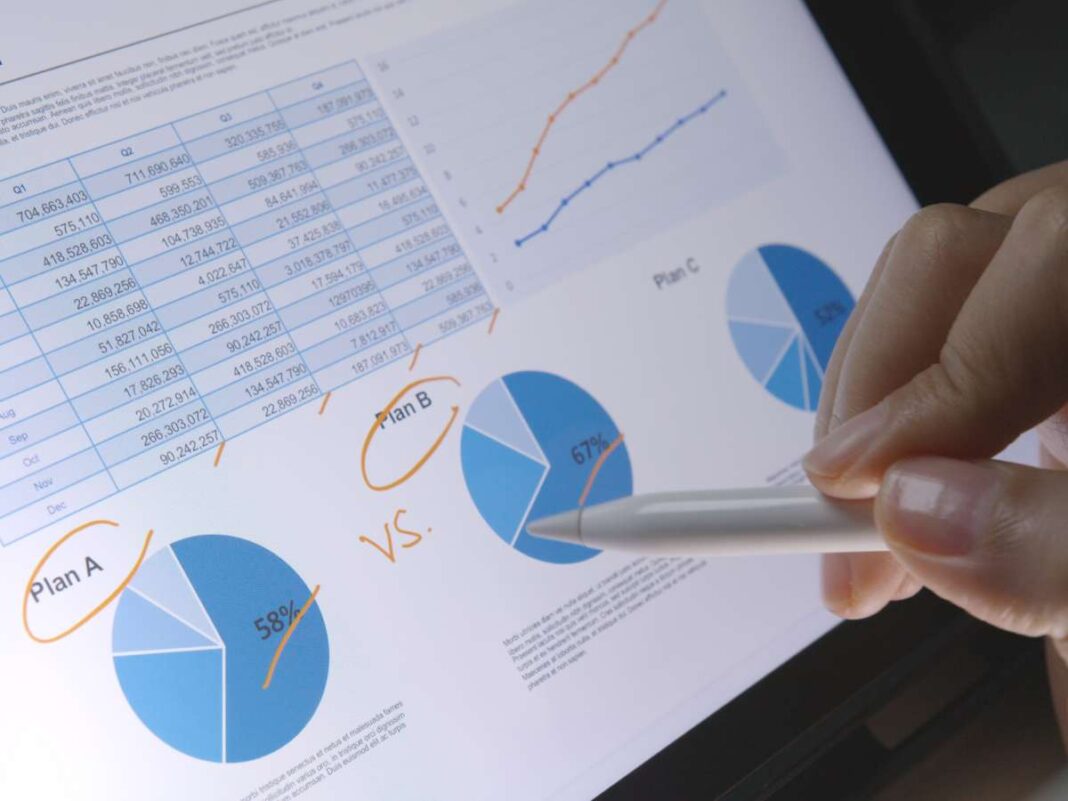Financial forecasting is a great tool for small businesses aiming to navigate market uncertainties and plan for sustainable growth. By projecting future revenues, expenses, and cash flow, businesses can make informed decisions, prepare for challenges, and seize opportunities.
Why Financial Forecasting Matters
Planning for Growth
Financial forecasting helps small business owners set and achieve realistic business goals by providing a roadmap of expected revenues and expenses. It enables entrepreneurs to outline strategies for expansion, investment, and scaling operations effectively.
Managing Cash Flow
Effective cash flow management is important for all businesses. Forecasting allows companies to predict expenses and revenues to prevent cash shortages, ensuring smooth operations even during seasonal fluctuations.
Preparing for Challenges
Analyzing historical data and market trends helps a business anticipate potential hurdles and develop strategies to overcome them. This approach helps them mitigate risks associated with economic downturns or industry disruptions.
Enabling Smarter Decisions
Financial forecasts provide clarity for decision-making related to hiring, inventory management, marketing investments, and more, allowing businesses to make informed, proactive choices. This strategic planning enhances operational efficiency and profitability.
Qualifying for Financing
When applying for loans, a well-prepared financial forecast demonstrates financial competence and potential profitability, helping businesses qualify for financing. It showcases the organization’s preparedness and instills confidence in lenders and investors.
Understanding Financial Forecasts and Business Plans
While a business plan outlines the company’s goals and strategies, the financial forecast provides numerical projections to support the plan. It is similar to a Profit and Loss Statement but focuses on future performance. Together, they offer a comprehensive picture of the business’s direction and financial health.
Key Components of Financial Forecasts
- Sales/Revenue: Projected earnings over a specific period.
- Expenses: Anticipated costs related to operations.
- Profit: Revenue remaining after subtracting expenses.
Understanding these components helps create a realistic and actionable forecast that guides business strategies.
Types of Financial Forecasting
Financial forecasting methods fall into two categories: quantitative and qualitative.
Quantitative Methods
These methods use mathematical and statistical models based on historical data to predict future trends.
Straight-Line Method
This method assumes consistent growth based on historical data. For example, a retail business may predict a steady 5% annual revenue growth using the straight-line method. It’s simple and fast but doesn’t account for market fluctuations.
Moving Average Method
Calculating the average of past data points helps smooth out most short-term fluctuations and highlight longer-term trends. This is useful for short-term forecasting in fast-moving markets but requires frequent updates with new data.
Simple Linear Regression
Analyzing the relationship between two variables allows businesses to forecast future values. For instance, a company might forecast revenue based on advertising spend. It’s accurate for linear relationships but ignores complex interactions.
Multiple Linear Regression
By considering multiple variables affecting the outcome, this method provides a more accurate and comprehensive forecast, suitable for complex scenarios. However, it requires large datasets and can be complex to interpret.
Qualitative Methods
These rely on expert opinions and market research, especially useful when historical data is limited.
Expert Consultation
Gathering insights from industry specialists can help predict market trends and consumer behavior. It’s effective but may introduce bias based on individual perspectives.
Market Research
Surveys and studies help businesses understand customer preferences, aiding in forecasting when launching new products or entering new markets. This method provides actionable insights but can be time-consuming and resource-intensive.
Steps to Create a Financial Forecast
1. Gather Historical Data
Collect past financial statements to identify trends in revenue, expenses, and cash flow. Historical data forms the foundation of your forecast, revealing patterns and seasonal variations.
2. Define Forecast Objectives
Clearly establish the purpose of the forecast, whether it’s for budgeting, growth strategy, or securing financing. This focus ensures the forecast aligns with business goals and decision-making needs.
3. Choose the Right Forecasting Method
Select a method that suits your business’s size, industry, and data availability. Consider whether quantitative or qualitative approaches, or a combination, best fit your situation.
4. Make Reasonable Assumptions
Base your projections on realistic assumptions, considering market conditions and industry benchmarks. Avoid overly optimistic or pessimistic estimates to maintain credibility and reliability.
5. Estimate Sales and Revenues
Use market analysis and historical sales data to project future sales. Account for factors like market trends, economic indicators, and competitive landscape.
6. Project Expenses
Anticipate costs, including fixed and variable expenses, and account for planned changes such as staffing increases or equipment purchases.
7. Create Pro Forma Financial Statements
Create income statements, balance sheets, and cash flow statements. These documents provide a comprehensive view of expected financial performance.
8. Review and Adjust Regularly
Regularly update your forecasts to reflect actual performance and changing market conditions. This ongoing process enhances accuracy and keeps strategies aligned with business realities.
Tools and Resources for Financial Forecasting
Modern tools can enhance the accuracy and efficiency of financial forecasting.
Accounting Software
Utilizing accounting software can streamline data analysis and projection, offering features like real-time data tracking and scenario planning. These tools reduce manual errors and save time.
Financial Planning Platforms
Platforms like Upmetrics provide AI-assisted forecasting and financial modeling, simplifying complex calculations. They offer interactive visual graphs and integration with accounting systems.
Expense Management Tools
Tools like Expensify automate expense tracking and reporting, aiding in accurate forecasting. They provide real-time insights and reduce errors associated with manual processes.
Professional Guidance
Consulting with accountants or financial advisors can provide expertise, helping refine forecasts and interpret complex data. Expert advice ensures compliance with financial regulations and identifies potential risks and opportunities.
Conclusion
Financial forecasting is a vital practice for small businesses; it helps them plan for the future, make informed decisions, and navigate uncertainties. By understanding different forecasting methods, utilizing modern tools, and regularly updating projections, businesses can position themselves for both short-term stability and long-term success.

